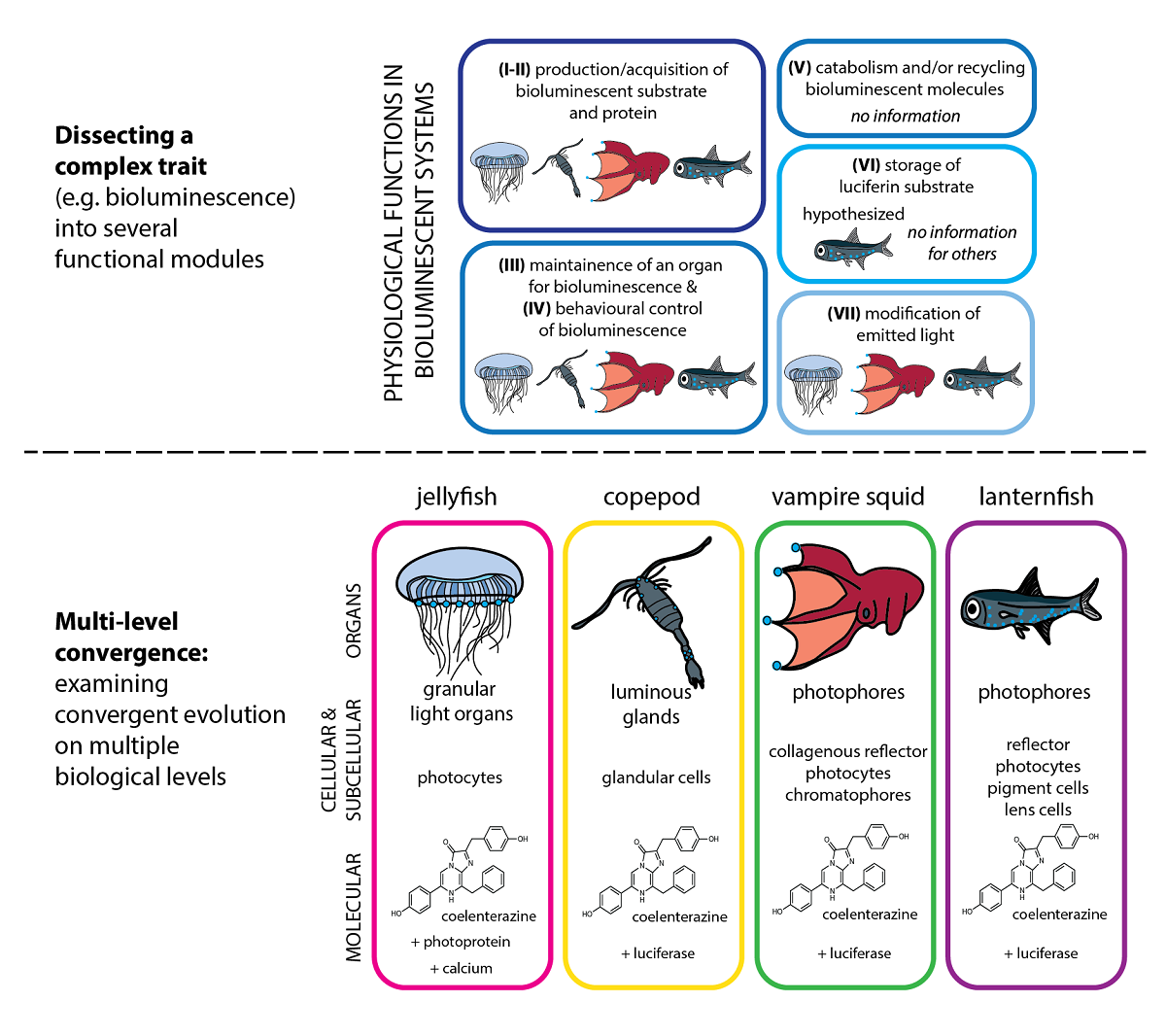Evolutionary convergence provides natural opportunities to investigate how, when, and why complex traits evolve. The complexity of convergent traits highlights the importance of explicitly considering convergence on different levels of biological organization, or “multi-level convergent evolution”. In order to extend this approach from studying convergence to an integrative workflow for studying complex trait evolution, we propose a holistic and hierarchical framework, which emphasizes breaking down the traits to several functional modules to investigate multi-level convergent evolution. We begin this review by identifying long-standing questions on the origins of complexity and the mechanisms underlying phenotypic convergence to discuss how their research can be enhanced by examining convergent systems. We argue that bioluminescence, a complex trait that evolved dozens of times through either novel mechanisms or conserved toolkits, is particularly well-suited for these studies. We present an updated estimate of at least 84 independent origins of bioluminescence across the tree of life, which was calculated by improving the taxon sampling in cnidarians, fishes, and cephalopods. Then, we use the presented framework to review the biology, chemistry, and evolution of bioluminescence, and for each biological level, identify questions that arise after our systematic review. We focus on luminous organisms that use the shared luciferin substrates coelenterazine or vargulin to produce light because these organisms convergently evolved bioluminescent proteins that use the same luciferins to produce bioluminescence. Lastly, we highlight promising avenues for developing bioluminescence as a model system for studying multi-level convergent evolution.

